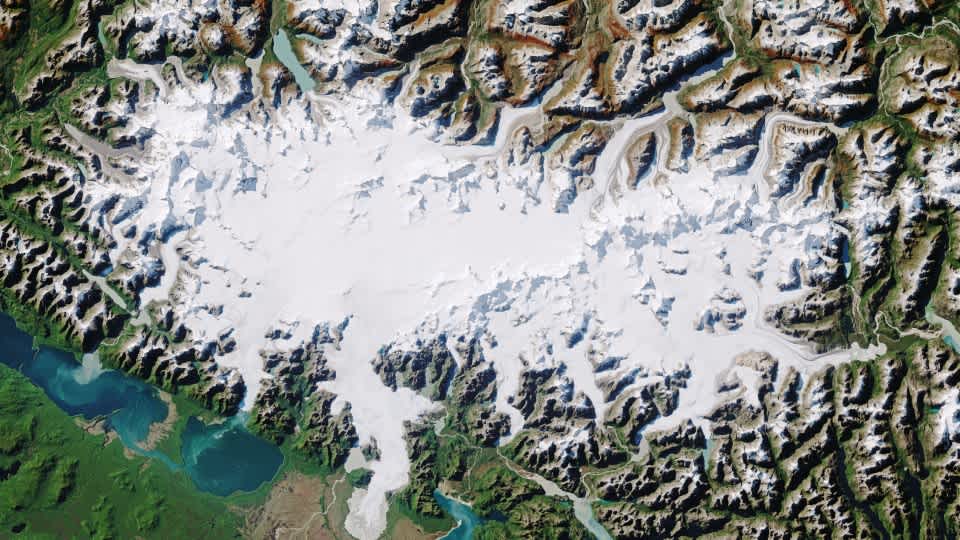
Taking action after COP26
Human-caused climate change is real, and it’s already impacting the Minnesota we know and love.
COP26 was the United Nations’ climate change conference that aimed at combating climate change by bringing together world leaders who can take bold actions—but how do museums, and the amazing people who visit them (that’s you!), play a part?
Patrick Hamilton, the Science Museum’s Director of Climate Change, Energy & the Environment, flew to Glasgow to attend this crucial conference. Here’s what he learned and shared in Scotland that impacts all of us.
Solving climate change only happens when we come together
COP26 brought nearly 40,000 people together to talk about one massive issue facing us all: climate change.
But, as Patrick says, “The COP process is loud, messy, and confusing, as would be expected from any enterprise that brings together the perspectives of nearly 200 countries from around the world. But it is the only mechanism we have as a species to safely navigate the dangerous global situation in which we collectively find ourselves.”
The dangerous situation? A world changed forever by the impact of human activity through emissions—CO2, methane, and other greenhouse gases. Cutting CO2 emissions was a main focus at COP26, as Patrick explains, “Because they are the long-term driver of climate change and ocean acidificiation.”
But why is climate change hard to act on? While it impacts everyone who lives on Earth, the effects of climate change show up differently in different places.
The Midwest matters
Climate change is a global issue. But Minnesota, as a part of the Midwest, plays a much bigger role than you might have guessed.
If the American Midwest were its own country, it would be the sixth largest emitter of greenhouse gases on Earth! Those greenhouse gases come from coal-fired power plants, fossil fuels heating our homes, agriculture, and the fact that we all drive a lot. And the thing about greenhouse gases is that they don't stay put. They impact the whole world.
Many of the people who climate change impacts live in poorer and more vulnerable nations that actually contribute the least to the problem.
Island nations are experiencing rising sea levels, warming oceans, and extreme tropical storms. In poorer countries across geographies, heatwaves, droughts, and crop losses are becoming more and more common. Indigenous people across the world have known for generations about this threat, and as Nishnaabeg scholar Leanne Betasamosake Simpson explains, “Indigenous peoples have witnessed continual ecosystem and species collapse since the early days of colonial occupation.”
But as a part of one of the world’s largest emitters, we can make a difference.
Patrick joined other Midwestern leaders at COP26 to make the case for change: the Midwest needs to “eliminate the burning of coal to generate electricity.” And that’s just one piece of the puzzle. Each of us can take action when it comes to reducing emissions in the places we live and work.
Climate change and us
We all share this beautiful, wild Earth–and because it’s our home, it’s our job to protect it.
Patrick brings us his tips for making your day-to-day life more sustainable and advocating for the necessary, greater changes to reduce emissions:
Improve your home’s energy efficiency. Whether you rent or own a home, energy.gov has some great tips and resources for saving energy (and money).
Offset what you can. If your energy company allows, try subscribing to a renewable energy source instead of coal-powered energy. The is powered by wind through Xcel Energy’s Windsource program.
Reach out. Raise the idea of reducing and offsetting emissions to your employer, places of worship, school, and businesses that you frequent. It’s surprising how much of a difference one organization can make!
Contact your elected leaders. Let them know that climate change is a serious threat to lives and livelihoods and that you expect to see them take action against it.
Want more tips for making a difference? Check out our blog: .
Don’t lose hope
COP26 wasn’t just about conversations—it was a time to take action.
The US Department of Energy has announced big plans to act on climate. Earlier this year, they revealed they’ll be working on low-cost hydrogen and long-duration electricity storage as a part of their Earthshots program. And in Glasgow, they announced a project to achieve large-scale extraction and storage of CO2 from the atmosphere.
We need every nation, especially the biggest emitters, to reduce their greenhouse gas emissions. The way to make it to a safer, healthier world without climate change is paved with hope and action.